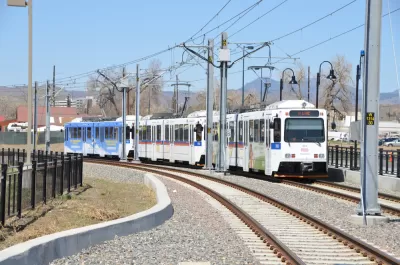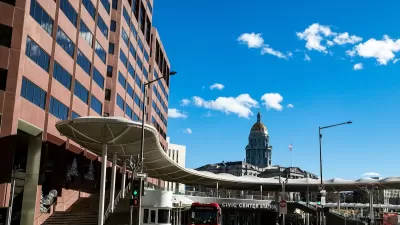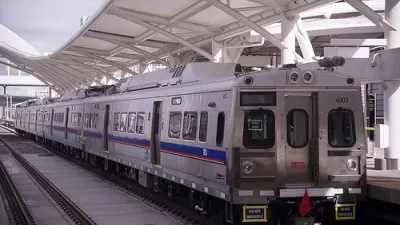Lawmakers say the agreement prevents a drawn-out legislative battle and establishes a new source of transit funding.

Colorado lawmakers have agreed to drop one set of air quality legislation and propose two new bills to “codify agency rules that cut smog-forming compounds from drilling operations into state law and establish a new fee for oil and gas production” in an effort to prevent a lengthy ballot process and legislative back-and-forth and to create a new source of transit revenue. “Kelly Nordini, the CEO of Conservation Colorado, said the agreement offered a better outcome than pursuing a divisive and complicated ballot fight this fall.”
According to reporting by Sam Brasch, Nathaniel Minor, and Bente Birkeland for Colorado Public Radio News, “State. Sen President Steve Fenberg, D-Boulder, said the new fee is expected to generate an average of $138 million annually. Eighty percent of the new revenue stream would go toward public transit across the state, including a potential Front Range rail line. The other 20 percent would support parks and wildlife conservation.”
The new funding could help complete the Regional Transportation District’s (RTD) FasTracks rail construction plan that voters approved in 2004 and which remains incomplete. Of the projected new transit revenue, 70 percent would go to local operations and the rest would fund state rail projects and grants.
FULL STORY: Gov. Polis announces major oil and gas truce in exchange for transit funding

Maui's Vacation Rental Debate Turns Ugly
Verbal attacks, misinformation campaigns and fistfights plague a high-stakes debate to convert thousands of vacation rentals into long-term housing.

Planetizen Federal Action Tracker
A weekly monitor of how Trump’s orders and actions are impacting planners and planning in America.

San Francisco Suspends Traffic Calming Amidst Record Deaths
Citing “a challenging fiscal landscape,” the city will cease the program on the heels of 42 traffic deaths, including 24 pedestrians.

Defunct Pittsburgh Power Plant to Become Residential Tower
A decommissioned steam heat plant will be redeveloped into almost 100 affordable housing units.

Trump Prompts Restructuring of Transportation Research Board in “Unprecedented Overreach”
The TRB has eliminated more than half of its committees including those focused on climate, equity, and cities.

Amtrak Rolls Out New Orleans to Alabama “Mardi Gras” Train
The new service will operate morning and evening departures between Mobile and New Orleans.
Urban Design for Planners 1: Software Tools
This six-course series explores essential urban design concepts using open source software and equips planners with the tools they need to participate fully in the urban design process.
Planning for Universal Design
Learn the tools for implementing Universal Design in planning regulations.
Heyer Gruel & Associates PA
JM Goldson LLC
Custer County Colorado
City of Camden Redevelopment Agency
City of Astoria
Transportation Research & Education Center (TREC) at Portland State University
Jefferson Parish Government
Camden Redevelopment Agency
City of Claremont





























